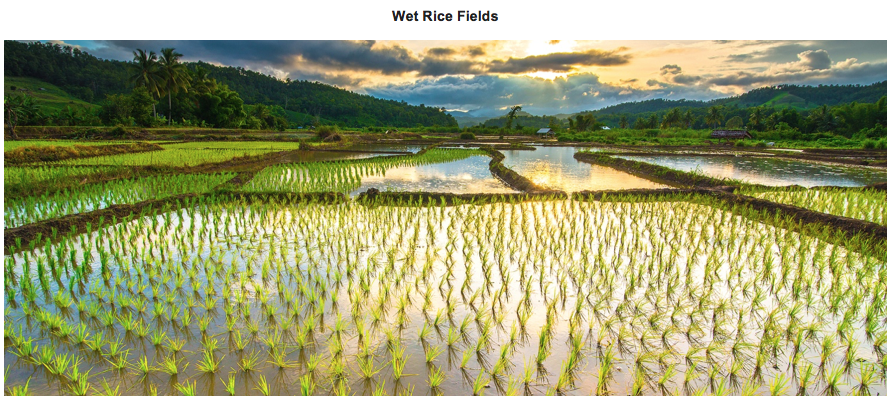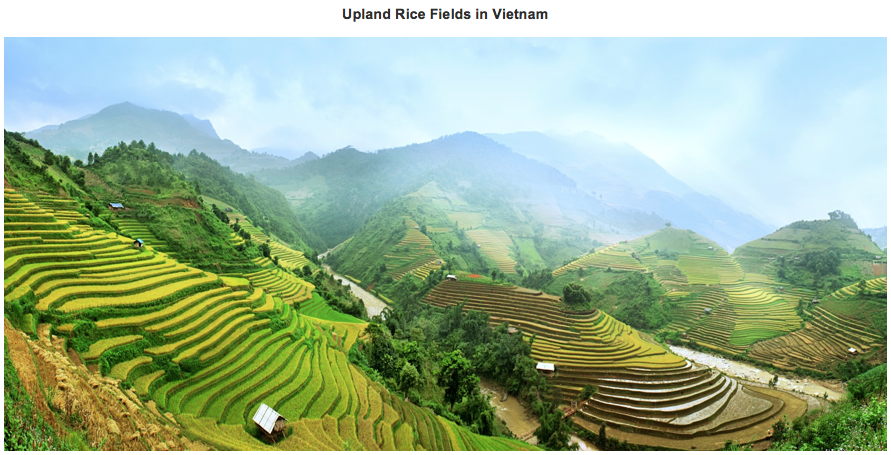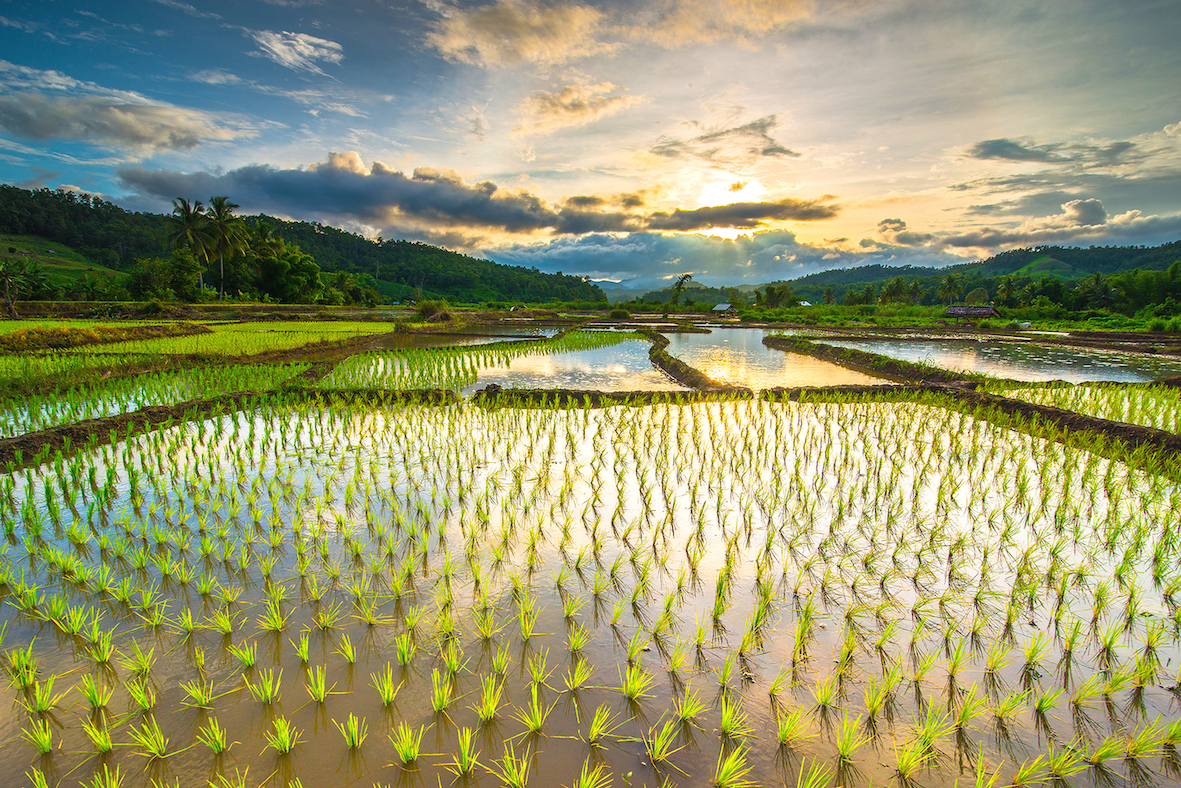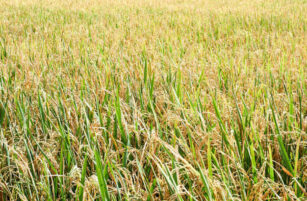
In our last article on Sustainable (Intensive) Agriculture, we discussed why rice is a unique crop and began to explain how it’s become a success story for intensification, but much less so for sustainability.
Rice in the Green Revolution
Rice was one of the main beneficiaries of the Green Revolution, along with wheat and maize. Yields exploded, taking millions out of starvation and poverty, and in its early years, global rice production increased by 175% (1965 to 2012).
The theoretical maximum production for rice is deemed to be around 20 mt/ha.
In 2010, Yuan Longping of China’s National Hybrid Rice Research and Development Centre (China) produced 19 mt/ha. In 2011, Sumant Kumar, an Indian farmer produced a record 22.4 mt/ha. Both used the System of Rice Intensification (SRI) discussed in the previous article.
From an SIA standpoint, these yield improvements came as a result of both desirable and undesirable characteristics. For context, yield improvements via plant breeding and use of improved methods are the most desirable, whilst increased use of fertilizer and pesticides are less desirable. Things like topography, climate and soil types (etc) also play an important role.
The middle ground is a combination of both, and these two farmers fall into this category. However, they merely set out to achieve maximum yields, so no criticism implied.
We’re going to examine two rice growing ideas in more detail now, both of which are well aligned with SIA methodologies: SRI and Aerobic Rice.
Systems of Rice Intensification
Although there are some detractors of this system, due to variable results, much of this is likely due to learning a new method, a need for improved education and increased labour in the early years. As spacing is wider, there’s considerable work required in weeding until the canopy closes.
The essential components of SRI are:
1. Keep rice fields moist, rather than saturated.

Root growth is increased, so yields should theoretically rise. Considerably less water is used in SRI, which is especially helpful in irrigated systems where benefits can include preserving water tables and reduced energy use in pumping water. Carbon sink potential is improved and CH4 emissions are reduced compared to flooded rice.
1. Rice plants should be planted as single plants at the optimum spacing (20cm).
Beyond this, there’s no benefit and these tender plants are not well suited to mechanical rice transplantation. This maximizes the photosynthetic area of the leaves. The wetting process increases nitrogen mineralization, rather than using synthetic fertilizer.
2. Transplantation should be early at the two leaf stage (around 10 days from germination).
This avoids transplantation shock and also leads to an earlier harvest, which in some systems can allow farmers to plant a following crop, such as wheat, where this was not previously possible. Intensification has to be from one crop but can be over a multi-crop cycle.
From an SIA perspective, there’s a lot to like about the SRI system. It promises more for less (greater production with reduced inputs).
Aerobic Rice Systems (ARS)
Although dry direct seeding is possible in both upland and lowland rice, and both irrigated and non-irrigated situations are viable, we’re using upland as an SIA example.

It demonstrates the importance of working with nature in SIA. Upland rice farmers have started to benefit from more drought resistant varieties.
In especially wet areas (or those with irrigation), upland varieties won’t perform as well as their traditional lowland twins, even those planted in an upland situation. However, as water is restricted, the water response curve (for yield) reaches a crossover point where these specially bred varieties overtake. Add in the benefits of being able to reduce or eliminate tillage and use mulching, and this becomes an important development in the right situation.
There are several downsides though.
The largest is the need to increase herbicide and insecticide use, although in the latter, introduction of a legume into the rotation (e.g., soybean) can combat the build-up of nematodes, as well as the need for more macro and micronutrients. This is because the soybean will provide residual nitrogen.
Another development has been the use of plastic sheets in aerobic systems as a means of preserving moisture, reducing weed competition, speeding up establishment and providing an earlier harvest date. It’s better to be cautious about this as there’s a danger the plastic will not be disposed of correctly, thereby creating a different type of environmental pollution. Biodegradable plastic mulch would be an acceptable alternative.
Conclusion
The diversity of systems indicates there’s no single solution from an SIA standpoint for growing rice. In our next article on rice, we’re going to consider issues such as rice plant breeding, education and food waste.

Other Opinions You Might Be Interested In…
- Sustainable Agriculture: Arable Farming
- Sustainable Agriculture: Arable Nitrogen Use
- Sustainable Agriculture: Tackling Fertilizer Waste Head-On
- Sustainable Agriculture: Advanced Technology to Improve Yields













